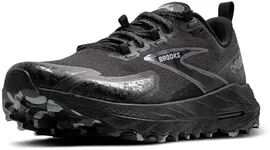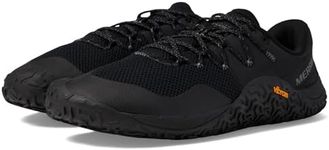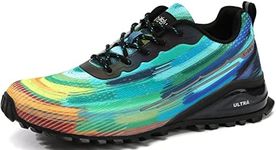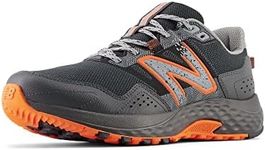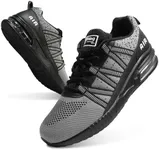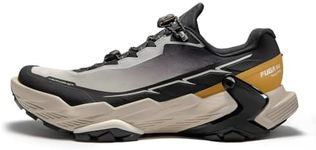Buying Guide for the Best Men's Trail Running Shoes
Choosing the right pair of men's trail running shoes is crucial for a comfortable and safe running experience on rugged terrains. Trail running shoes are designed to provide better grip, stability, and protection compared to regular running shoes. When selecting a pair, consider the type of trails you will be running on, your running style, and personal comfort preferences. Here are some key specifications to help you make an informed decision.TractionTraction refers to the grip of the shoe on various surfaces. This is important because trail running often involves uneven, slippery, or loose terrain. Shoes with aggressive lugs (deep, widely spaced treads) offer better grip on muddy and soft trails, while shoes with smaller, more closely spaced lugs are suitable for hard-packed trails. If you run on a mix of terrains, look for versatile shoes with moderate lugs.
CushioningCushioning is the amount of padding in the shoe's midsole, which affects comfort and shock absorption. High cushioning provides more comfort and protection for long-distance runs or rough trails, but it can be heavier. Low cushioning offers a more responsive feel and is lighter, making it suitable for shorter runs or smoother trails. Choose the level of cushioning based on the distance you plan to run and your preference for comfort versus responsiveness.
Support and StabilitySupport and stability features help prevent injuries by keeping your foot in place and providing balance on uneven terrain. Shoes with a firm midsole and a wider base offer better stability, which is important for technical trails with rocks and roots. If you have a tendency to overpronate (your foot rolls inward), look for shoes with added support features like medial posts. For neutral runners, standard stability features should suffice.
ProtectionProtection in trail running shoes includes features like toe guards, rock plates, and reinforced uppers to shield your feet from rocks, roots, and other trail hazards. If you run on very rocky or technical trails, look for shoes with robust protective elements. For less technical trails, lighter protection may be sufficient. Consider the level of protection based on the roughness of the trails you frequent.
Fit and ComfortFit and comfort are crucial for preventing blisters and ensuring an enjoyable run. Trail running shoes should fit snugly but not too tight, with enough room in the toe box to accommodate foot swelling during long runs. Try on shoes at the end of the day when your feet are slightly swollen, and consider wearing the socks you plan to run in. Pay attention to any pressure points or areas of discomfort, as these can lead to issues during your runs.
Water ResistanceWater resistance is important if you run in wet conditions or through streams and puddles. Waterproof shoes with membranes like Gore-Tex keep your feet dry but can be less breathable, which might lead to sweaty feet in warm conditions. Water-resistant shoes offer some protection while maintaining better breathability. Choose based on the typical weather and trail conditions you encounter.
WeightWeight affects how heavy the shoes feel on your feet, which can impact your running efficiency and fatigue levels. Lighter shoes are generally preferred for faster runs and races, while heavier shoes with more features (like extra cushioning and protection) are better for long-distance runs and rough trails. Balance the need for lightweight shoes with the necessary features for your running conditions.

